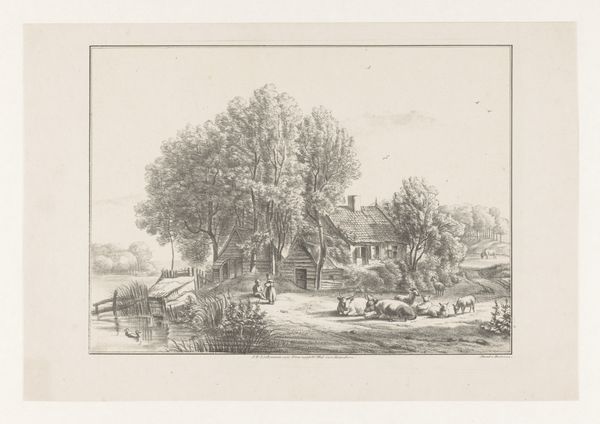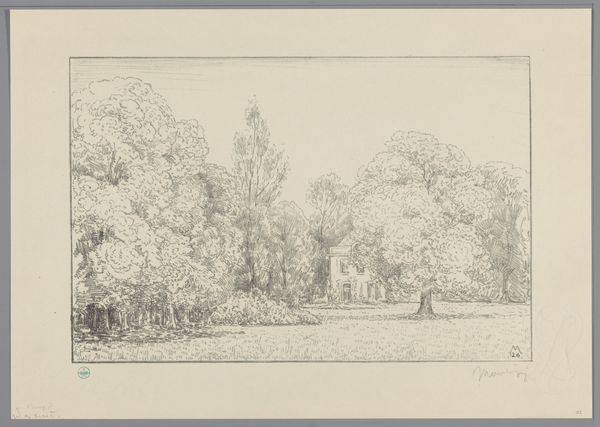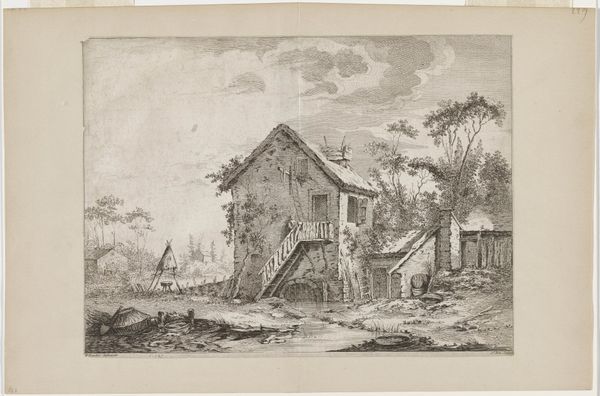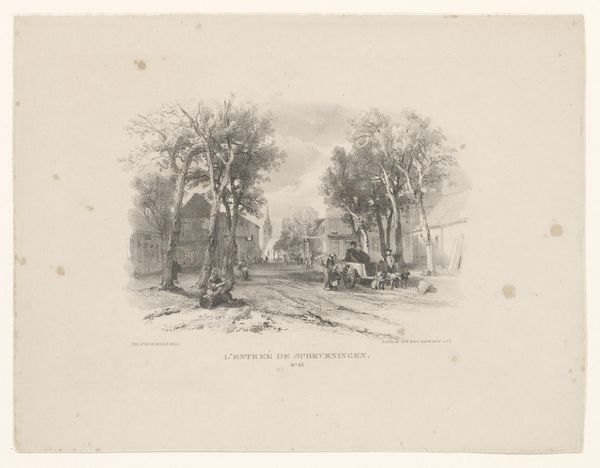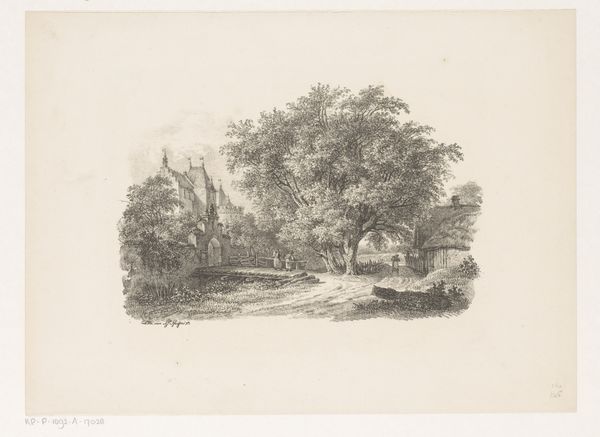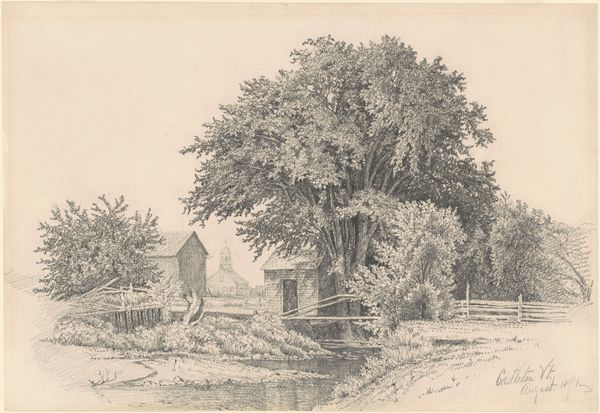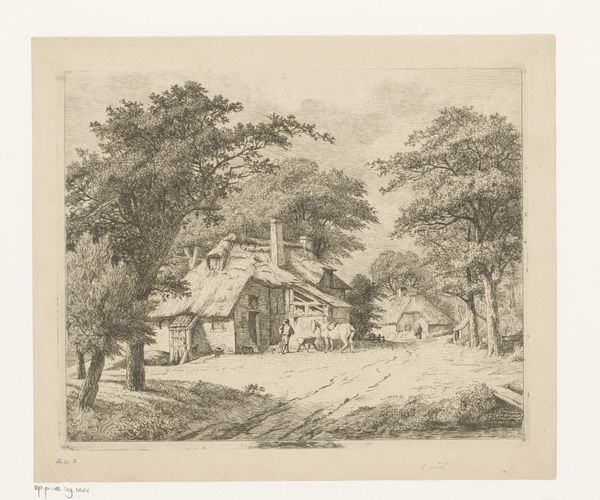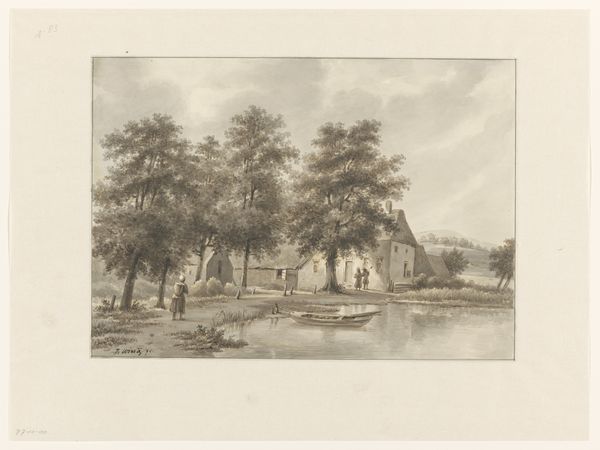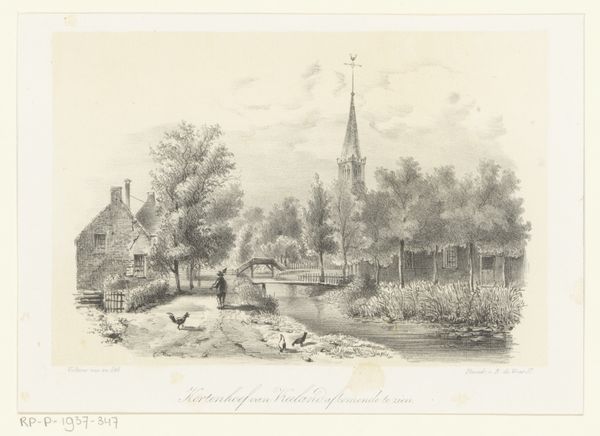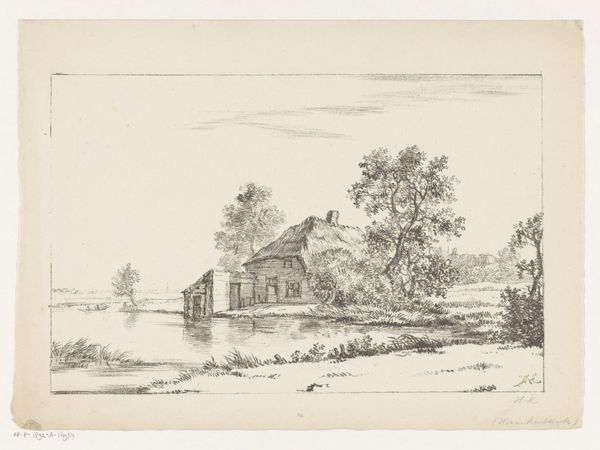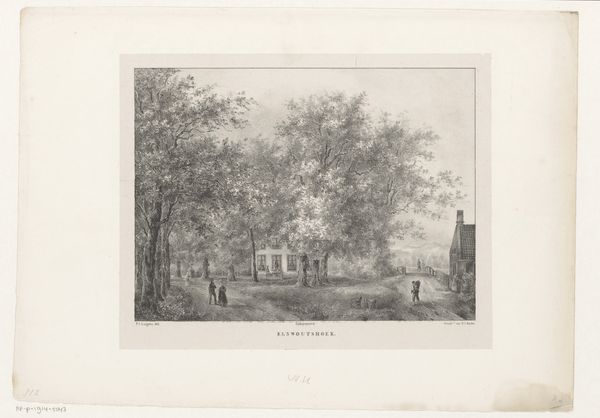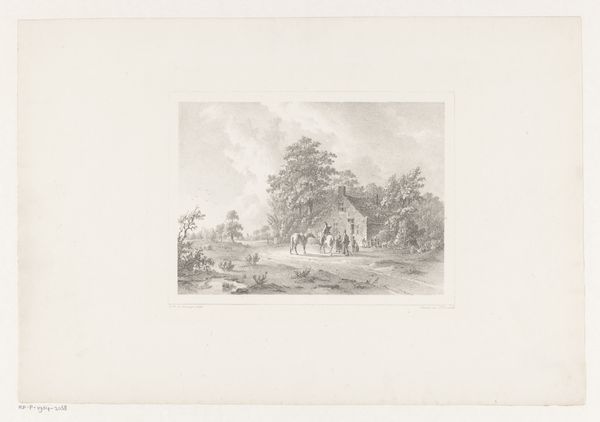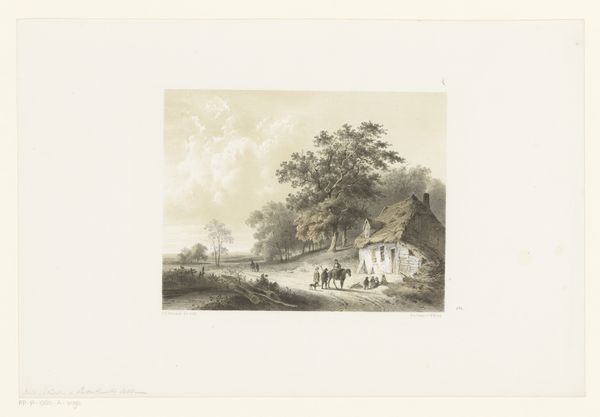
drawing, print, ink, pencil, pen
#
drawing
# print
#
pen sketch
#
pencil sketch
#
landscape
#
ink
#
pen-ink sketch
#
pencil
#
pen
#
realism
Dimensions: height 145 mm, width 206 mm
Copyright: Rijks Museum: Open Domain
Curator: Immediately striking, isn't it? The artist has captured a serene yet ordinary scene with such precision. Editor: It certainly does. This drawing, dating somewhere between 1824 and 1874, is titled “Gezicht op Kortenhoef,” by Johan Diderik Cornelis Veltens. It seems deceptively simple— a detailed landscape made with pen, pencil, and ink, translated to print—yet I’m captivated by its formal elements. Curator: Deceptive is right. This isn't just a landscape; it’s a slice of 19th-century rural life. Kortenhoef was a popular spot for artists at the time, escaping urban centers. Consider who was allowed that luxury. This isn't merely representation; it subtly reveals the burgeoning leisure class. Editor: True, yet, the way Veltens manipulates light and shadow using delicate hatching and cross-hatching really makes this piece pop. Observe the intricate rendering of foliage and architecture. It's technically superb, creating depth and texture that elevate it beyond a mere sketch. Curator: The figures on the road offer narrative depth, subtly hinting at gender roles and social dynamics of the time. Notice who's strolling leisurely versus who is engaged in work. Consider the limited roles prescribed to women then. This impacts how we perceive not just landscape but the socio-economic terrain, too. Editor: You’re correct that the composition invites that analysis, however, without understanding the formal structures within, it would lack a key dimension. Consider how the horizontal lines of the road and bridge, contrasted against the verticality of the trees, give our eyes cues for perceiving perspective. Curator: Right, and that very perspective places the viewer as an outsider looking into a particular Dutch reality. Who gets to gaze upon this rural idyll and who is caught within it? Editor: It's precisely through this interplay of form and historical context that its visual language deepens and evolves. Curator: Agreed. Art, after all, demands we engage with its many layers. Editor: Indeed, it's through these multiple layers that meaning comes to the surface.
Comments
No comments
Be the first to comment and join the conversation on the ultimate creative platform.
